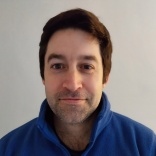Home › magazine › latest news › Differences in cleaning practices between countries
Differences in cleaning practices between countries
18th of February 2025For three years a team of industry experts has been gathering material on cleaning ergonomics and conscious cleaning. In the latest of their exclusive articles for ECJ, Helge Alt from Puhastusekspert in Estonia and Tarja Valkosalo of Propuhtaus Finland (who have been involved since the start) look at how cleaning practices vary from country to country.
Both of us have had a passion for decades to analyse scientific research on cleaning, to take an interest in how cleaning is done in different countries. It has to be acknowledged that there can be great differences in the beliefs about cleaning.
We have been working together for the last five years on three international Erasmus+ projects focused on developing and teaching knowledge-based cleaning. For example, the following differences have emerged in these projects:
• In Finland, Estonia, and Latvia, the wetting of cleaning textiles is categorised into four types: dry, damp, moist, and wet. In the Netherlands, for example, dry, damp and wet, while in some countries only dry and wet. In the last project, we realised that the precise wetting of cleaning textiles, according to the dirt to be removed, is a key issue for effective cleaning. For example, five ml too much moisture per cloth can already cause dirt to be carried on the surface, not removed. It is therefore important that the terms are appropriate and that everyone understands the terms used.
• In the Nordic countries, cleaning with pre-moistened cleaning textiles has been a principle for decades. Cleaning solutions are not carried in buckets in cleaning trolleys. Rinsing cleaning textiles in a detergent solution is not considered professional cleaning. However, there are countries where cleaning solutions are prepared in cleaning buckets and cleaning textiles are moistened and rinsed in these solutions during the working day.
• Mopping practices can vary, with the mop being moved in an S, M or Z direction, and there are also differences between moving the mop back to front or face to front, i.e. whether the cleaner moves straight ahead or backwards.
• How sinks are cleaned, whether with a brush, a sponge, a microfibre cloth or a microfibre-sponge, washed in a washing machine after each use.
• The use of spray bottles in cleaning: this is a common way of applying cleaning agent to a cloth or surface. However, there are scientific studies and practices that prohibit the use of spray bottles because of their negative effects on workers' health, their uneconomical use and their time-consuming nature. There are practices where the use of spray bottles in cleaning is forbidden, there are places where the cleaning trolley is equipped with several different types of spray bottles.
How do you make decisions about what is right?
The aim of cleaning is to achieve cleanliness, that is, to remove the dirt that should not be on surfaces. It is effective if the dirt can be removed with a minimum of time, chemicals, water and the work is as ergonomically light as possible. By keeping this principle in focus, decisions can be made as to what is the best option in a given case. There is no one right way to clean, but the goal is to achieve cleanliness.
It is often the case that a certain way is more ergonomic or safer or 'greener' but does not remove enough dirt. The most important thing is still to achieve cleanliness.
The key is having the knowledge to plan effective cleaning. How the cleaner works, his or her skills and beliefs can be the deciding factor.
The magic of international experience is that there is something to learn from every country, and by putting together best practices, the effectiveness of cleaning can be significantly improved.
Find out more about the results of the Erasmus+ projects: ErgoClean and the Pandemic Clean Project








